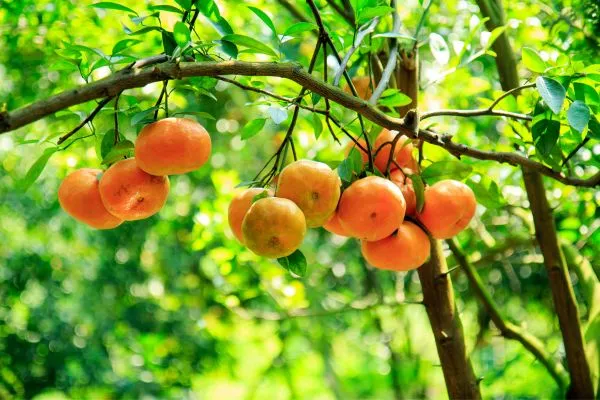Citrus plants are a delightful addition to any garden, offering not only vibrant foliage but also an abundance of tangy fruits.
Whether you’re a seasoned gardener or a beginner, cultivating citrus plants can be a rewarding experience.
In this article, we will explore the ins and outs of growing citrus plants, from selecting the right varieties to providing the ideal growing conditions.
Get ready to embark on a citrus-growing adventure and enjoy the tangy delights right in your own garden!
Choosing the Right Citrus Varieties
When it comes to citrus plants, there is a wide variety of options to choose from. Different citrus fruits have distinct flavors and growing requirements.
Here are some popular citrus varieties to consider for your garden:
- Oranges: Oranges are a classic citrus fruit known for their sweet and tangy flavor. Varieties like Valencia and Navel oranges are well-suited for home gardens due to their excellent taste and ease of cultivation.
- Lemons: Lemons offer a refreshing and tart flavor that adds a zesty twist to culinary creations. Meyer lemons are a popular choice for home gardens, as they are slightly sweeter than regular lemons and can be grown in containers.
- Grapefruits: Grapefruits are known for their juicy and slightly bitter taste. Varieties like Ruby Red and Marsh Seedless are commonly grown in home gardens and offer a burst of tangy goodness.
- Limes: Limes are a staple in many cuisines, adding a tangy and acidic flavor to dishes and beverages. Key limes and Persian limes are popular choices for home cultivation.
When selecting citrus varieties, consider your climate and the specific growing conditions in your area. Some varieties are better suited for warmer climates, while others are more cold-tolerant.
Consult with local nurseries or extension offices to determine the best citrus varieties for your region.

Providing the Ideal Growing Conditions
To cultivate healthy and productive citrus plants, it’s essential to provide them with the ideal growing conditions. Here are some key factors to consider:
- Sunlight: Citrus plants thrive in full sun, so choose a location in your garden that receives at least 6 to 8 hours of direct sunlight each day. Adequate sunlight ensures optimal fruit production and enhances the flavors of the citrus fruits.
- Soil: Citrus plants prefer well-draining soil with a slightly acidic pH between 6 and 7. Amend heavy clay or sandy soils with organic matter to improve drainage and fertility. Conduct a soil test to determine the pH and nutrient levels and make any necessary adjustments.
- Watering: Citrus plants require regular and consistent watering, especially during the hot summer months. Water deeply but infrequently, allowing the soil to dry out slightly between waterings. Avoid overwatering, as it can lead to root rot and other diseases. Mulching around the base of the plants helps retain soil moisture.
- Fertilization: Citrus plants are heavy feeders and benefit from regular fertilization. Use a balanced citrus fertilizer or a slow-release fertilizer specifically formulated for citrus plants. Follow the manufacturer’s instructions for application rates and timing. Apply fertilizer in early spring and late summer to support healthy growth and fruit production.

Planting and Propagating Citrus Plants
Planting Citrus Trees
When planting citrus trees, follow these steps to ensure successful establishment:
- Selecting healthy trees: Choose healthy, disease-free citrus trees from reputable nurseries or garden centers. Look for trees with well-developed root systems and vibrant foliage.
- Choosing the planting site: Find a location in your garden that receives full sun and has well-draining soil. Ensure there is enough space for the tree to grow and mature.
- Digging the planting hole: Dig a hole that is wider and slightly shallower than the root ball of the citrus tree. Loosen the soil at the bottom of the hole to encourage root growth.
- Planting the tree: Gently place the tree in the hole, making sure the bud union (the swollen area where the citrus tree is grafted onto rootstock) is above the soil line. Backfill the hole with soil, firming it gently around the roots.
- Watering and mulching: Water the newly planted tree thoroughly and apply a layer of organic mulch around the base, leaving a gap around the trunk to prevent moisture buildup.
Propagating Citrus Plants
If you want to propagate citrus plants, you have a few options:
- Seeds: Citrus seeds can be used for propagation, but keep in mind that the resulting plants may not be true to the parent fruit. Remove the seeds from ripe citrus fruits, wash off any pulp, and plant them in a well-draining potting mix. Germination can take several weeks.
- Cuttings: Propagating citrus plants from cuttings is a more reliable method to maintain the desired characteristics of the parent plant. Take 6- to 8-inch cuttings from healthy citrus trees, remove the lower leaves, and dip the cut end in a rooting hormone. Plant the cuttings in a pot filled with a well-draining rooting medium and keep them in a warm and humid environment.
Pruning and Care for Citrus Plants
Proper pruning and care contribute to the overall health and productivity of citrus plants. Here are some guidelines to follow:
- Pruning: Prune citrus plants to maintain their shape, remove dead or diseased branches, and improve airflow and sunlight penetration. Avoid heavy pruning, as it can reduce fruit production. Prune in late winter or early spring before new growth appears.
- Pest and disease management: Monitor your citrus plants regularly for pests such as aphids, citrus leaf miners, and scale insects. Use organic insecticides or horticultural oils as needed to control infestations. Apply fungicides as necessary to prevent diseases like citrus canker or powdery mildew.
- Fruit thinning: Citrus trees often produce more fruit than they can support. Thinning the fruits helps improve fruit size and quality. Remove excess fruits when they are still small, leaving a few inches of space between each remaining fruit.
Regular care, including watering, fertilizing, and pest management, ensures healthy growth and abundant harvests from your citrus plants.
Harvesting the Tangy Delights
The moment of harvest is when all your efforts come to fruition. Here’s how to determine when and how to harvest citrus fruits:
- Timing: Citrus fruits are usually ready for harvest in late fall through winter, depending on the variety. The fruits should reach their full color and have a slight give when gently squeezed.
- Harvesting: Use pruning shears or a sharp knife to cut the fruits from the tree, leaving a short stem attached. Avoid pulling or twisting the fruits, as it can damage the tree.
- Storing and enjoying: Citrus fruits can be stored at room temperature for a few days or refrigerated for longer shelf life. Enjoy them fresh, use them in culinary creations, or squeeze them for refreshing citrus juices.
Frequently Asked Questions (FAQs)
FAQ 1: Can I grow citrus plants in containers?
Yes, citrus plants can be grown in containers, making them suitable for small spaces or areas with colder climates.
Choose dwarf or semi-dwarf varieties that are well-suited for container gardening.
Ensure the containers have good drainage, use a high-quality potting mix, and provide adequate sunlight and regular watering.
FAQ 2: How long does it take for citrus plants to bear fruit?
Citrus plants generally take a few years to bear fruit after planting. The exact time can vary depending on the citrus variety, growing conditions, and the age and size of the tree at the time of planting.
On average, it can take 2 to 4 years for citrus plants to produce their first harvest.
FAQ 3: How often should I fertilize my citrus plants?
Citrus plants benefit from regular fertilization throughout the growing season. In general, it is recommended to fertilize citrus plants three times a year: in early spring, late spring, and early fall.
Use a balanced citrus fertilizer following the manufacturer’s instructions for application rates.
FAQ 4: What are some common pests and diseases that affect citrus plants?
Common pests that affect citrus plants include aphids, scale insects, citrus leaf miners, and citrus whiteflies. Diseases that can affect citrus plants include citrus canker, citrus greening, and powdery mildew.
Regular monitoring, proper cultural practices, and timely application of organic insecticides and fungicides can help manage and control these pests and diseases.
FAQ 5: Do citrus plants require pruning?
Yes, citrus plants benefit from selective pruning to maintain their shape, remove dead or diseased branches, and improve airflow and sunlight penetration.
However, avoid heavy pruning, as it can reduce fruit production. Prune your citrus plants in late winter or early spring before new growth begins.
FAQ 6: How do I protect citrus plants from frost or cold temperatures?
Citrus plants are generally sensitive to frost and cold temperatures. To protect them, cover the plants with frost blankets or use frost-sensitive materials like burlap.
Additionally, consider planting citrus trees in locations that provide some protection from cold winds or frost pockets.
Conclusion
Cultivating citrus plants in your garden allows you to indulge in the tangy delights of fresh, homegrown fruits.
By selecting the right citrus varieties, providing optimal growing conditions, and following proper care practices, you can enjoy a bountiful harvest of delicious citrus fruits.
Whether you have a spacious garden or a cozy balcony, citrus plants can thrive and bring a touch of zest to your outdoor space.
Start your citrus-growing journey and savor the tangy treasures that nature has to offer.
